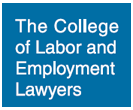Posted by Garrison, Levin-Epstein, Fitzgerald & Pirrotti, P.C. in News
Oct 19 2021
Discrimination and Retaliation Cases during the Pandemic: Whodunnit? COVID-19 or an Employer Who is Violating the Law?
Lawyers who advocate on behalf of terminated employees often operate as private detectives. Our role requires a full exploration of all the facts surrounding the termination, including the underlying employment, to figure out where the truth lies—or at least where the evidence points. This mission has become even more challenging during the pandemic. Is the employer exploiting this worldwide crisis to cover up what otherwise would be a clearly discriminatory or retaliatory termination? Or is the company simply making difficult but necessary decisions during unprecedented times to protect its long-term viability?
Consider a hypothetical employee who in November 2019 lodged a good faith complaint with Human Resources that she was being sexually harassed by the company’s CEO. No employment lawyer would dispute that, in this example, the employee engaged in protected activity, and it would be unlawful to retaliate against her for doing so.
Also consider, in this hypothetical, that the employer wants to retaliate against the employee for complaining about sexual harassment.
In order to establish a prima facie case of retaliation, a plaintiff must show that: (1) she engaged in a protected activity; (2) her employer was aware of this activity; (3) she suffered an adverse action; and (4) a causal connection exists between the alleged adverse action and the protected activity.
One of the simplest ways to show a causal relationship between the protected activity and adverse action is by demonstrating they occurred in close temporal proximity to one another. For example, if the employee was terminated or demoted within a few days or weeks of complaining about sexual harassment—and her job performance was otherwise satisfactory—she may be well poised to prove that, but for her complaint, she would not have been subjected to that action.
But what if the CEO got great legal advice and refrained from taking any action against her back then?
Then the coronavirus comes along and gives the company an apparent gift: the perfect “cover” to rid itself of the unwanted employee under the guise of the economic constraints presented by the pandemic. The employee can no longer avail herself of a temporal proximity argument several months later, and she loses, right?
Not so fast.
Courts have found temporal proximity to exist, notwithstanding the considerable passage of time between the protected activity and the retaliatory conduct, by measuring the time between those two key events from the earliest opportunity the employer has to retaliate against the employee following her protected activity. Enter the coronavirus. Here, the “earliest opportunity” doctrine might provide some protection for the employee who complained about sexual harassment especially if she was selected for termination over her peers who had not complained.
Another opportunity for the employer to use COVID-19 as a sword to violate the law rather than as a shield to protect the company might occur in the context of a reduction in force (RIF) connected to a diminution in the company’s bottom line in the wake of the pandemic.
The complete article can be accessed here.
Posted by Garrison, Levin-Epstein, Fitzgerald & Pirrotti, P.C. in News
Tagged Nina Pirrotti









